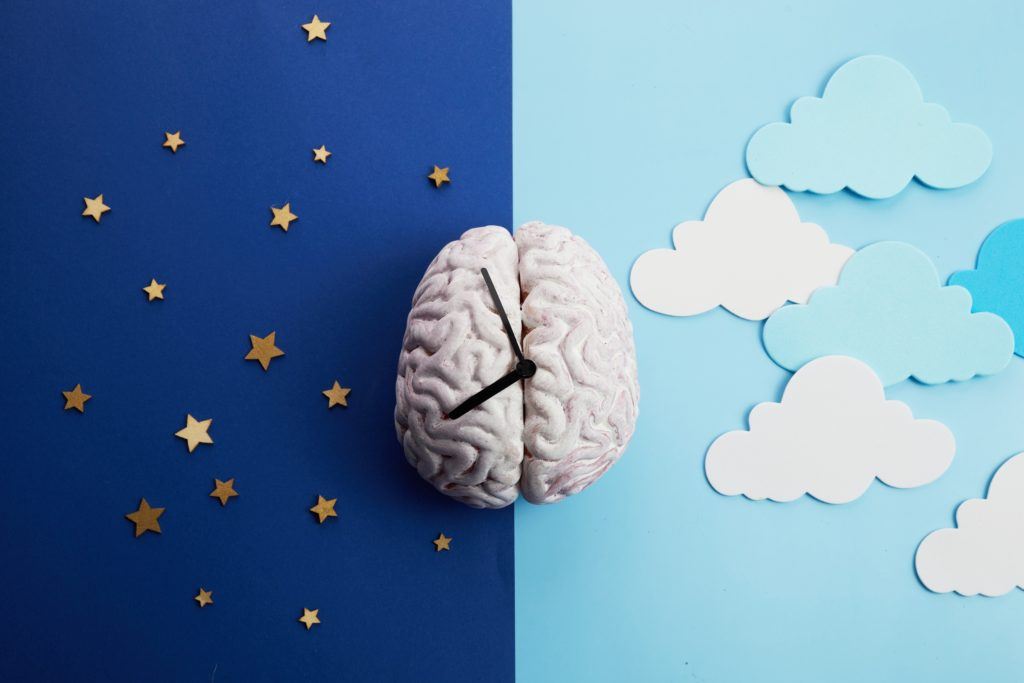
Imagine experiencing a state characterized by vivid visual imagery (with no sensory input), an altered sense of self or bodily boundaries, and heightened emotional activation.1 While this may sound almost psychedelic in nature, it can also describe what happens nightly during sleep – a change in conscious state that requires no external chemical input. The function and mechanisms of sleep remain elusive, but it is thought to be important for homeostatic regulation and maintaining processes in the brain that may be constrained during waking state.2 Sleep is necessary for healthy cognitive functioning and may have neuroplastic functions, allowing for changes in cellular structure and connectivity that support learning and memory.
Psychedelics are also thought to modulate neuroplasticity,3 which may contribute to their therapeutic efficacy.4 It is unclear how psychedelic-induced neuroplasticity may interact with homeostatic processes that occur during sleep. While there is still much to learn about both sleep and psychedelic states individually, it is also important to understand how they can affect one another. Healthy sleep behavior is important for many of the disorders that psychedelic-assisted therapies aim to treat. Therefore, it may be useful to understand whether psychedelics can disrupt sleep, as well as whether sleep (or its deprivation) can mediate psychedelic effects.
If you give a mouse a mushroom…
A new study by Dr. Christopher Thomas and colleagues at the University of Oxford explored the effect of psilocin on sleep-wake architecture in mice.5 Researchers investigated the short- and long-term effects of psilocin on the sequence, duration, and frequency of sleep and wake states.
Like humans, mice cycle through distinct stages of wakefulness, non-rapid eye movement (NREM) sleep, and rapid eye movement (REM) sleep.6 Sleep stages are distinguished using electroencephalography (EEG) and electromyography (EMG) recordings, which measure electrical activity via implanted electrodes in the brain and muscles, respectively.
NREM sleep is characterized by slow-wave activity, or low-frequency, high-amplitude EEG signals reflecting slow, synchronized brain activity.6 Conversely, REM sleep more closely resembles that of the waking state in EEG, with high-frequency and low-amplitude activity, reflecting decreased synchronization. REM sleep can be distinguished from waking state by reduced EMG activity – during deep sleep, muscles are paralyzed and animals remain motionless. While EEG signals provide a global view of surface-level brain activity, researchers in this study also used other devices to record changes in electrical activity deeper inside the brain, known as local field potentials (LFPs).7
In the three hours following psilocin injection, mice spent more time awake and less time in NREM or REM sleep. This short-term inhibition of sleep is not surprising, and previous studies have recognized the acutely wake-promoting effects of psychedelics in animals.8 The time to the first REM sleep period was delayed, an effect also seen in humans following day-time administration of psychedelics.9,10
Psilocin and Sleep Deprivation
The study authors were also interested in what effects psilocin may have when combined with sleep deprivation. Mice were injected with psilocin and kept awake for four hours in a sleep-deprivation protocol.5 Sleep pressure, an unknown biological process that drives the need to sleep, typically builds during waking hours and dissipates during sleep. The amplitude of slow-wave activity reflects sleep pressure – the magnitude of slow-waves are large during initial sleep then wane, and are larger following a period of sleep deprivation. Similarly, if a particular region of the brain is used intensely prior to sleep, slow-wave amplitude may be selectively greater in this region.11
The effect of psilocin in sleep-deprived mice was unexpected. “Definitely the most surprising result of this study was the effect on sleep homeostasis that we found,” said Dr. Christopher Thomas, lead author of the study, “both in that it only occurred on a local level (in the LFP) and not in the EEG, and also that it manifested as a change in the rate of slow wave recovery, rather than initial amplitude, which is the typical consequence of increased sleep pressure after sleep deprivation.”
“According to the synaptic homeostasis hypothesis, the amplitude of slow waves reflects total synaptic strength,” Thomas continued, and “slow wave amplitude after sleep deprivation is not changed by psilocin but instead this process of recovery is slower (at least in prefrontal cortex).” This is an unusual manifestation in that psilocin-treated mice did not recover from sleep deprivation at the same rate as untreated mice. It is unclear what mechanisms underlie this phenomenon, but one could speculate on the involvement of neuroplasticity.
The Role of Synaptic Plasticity in Sleep
“Our best understanding of psychedelic mechanism of action in mental disorders is anchored in synaptic plasticity, and synaptic plasticity is regulated by the sleep-wake cycle,” Thomas commented. Furthermore, “the persistence of synaptic change (and learning and memory) depends on subsequent sleep.”
“It may be that somehow normalization of synaptic strengths [during sleep] is more complex after psilocin, perhaps because the networks in which cells are embedded are more complex/numerous, even if total synaptic strength is not different, and this is why homeostatic recovery is slowed,” as was observed through the change in rate of slow wave recovery. “This is a speculative interpretation of course,” Thomas added. While many questions remain, these findings shed a light on changes in sleep behavior seen following psilocin administration and may be relevant to the clinical use of psychedelics.
Clinical Implications and Future Research
From a clinical perspective, “it will be important to understand to what extent sleep-wake history before and after dosing determines clinical efficacy,” Thomas said. Improving understanding of the interaction between psychedelics and sleep may give insight to “where a psychedelic experience might optimally fit within the sleep-wake cycle”, for example, whether “a trip [is] more likely to give lasting benefit if it occurs in the morning or evening.”
Understanding how an acute psychedelic experience interacts with sleep may be important for the development of therapeutic interventions, given the importance of healthy sleep in the disorders that psychedelic-assisted therapies aim to treat. Often, improving dysregulated sleep behaviour is important for treatment outcomes in psychiatric disorders.12
“On the issue of safety, it is perhaps noteworthy that there were no long-term effects on sleep-wake architecture seen,” Thomas continued. Beyond the initial wake-promoting effects of psilocin, sleep was undisturbed in mice during the days following psilocin injection. “However one should not rely on an over interpretation of small animal studies,” he added. This study is limited by its small sample size, as experiments were performed in only eight mice. It is also unknown whether similar outcomes would be observed in humans.
This study contributes some novel insight to the interaction between sleep and psychedelics, indicating that this relationship may be more complicated than previously thought. Future animal studies can continue to explore mechanisms that give insight to the interaction between sleep and psychedelic processes. Particularly, further investigation is needed to understand how psilocin impacts recovery processes following sleep deprivation. Psychedelic and sleep states remain as elusive as ever but learning about their interaction and bidirectional effect may lend insight to two conflicting states of consciousness.

I have serious sleep problems…think its a neuro degenerative disease…I’m 68 and havent been “diagnosed” by a neurologist but I have some of the symptoms…any research on mushrooms for helping with this?